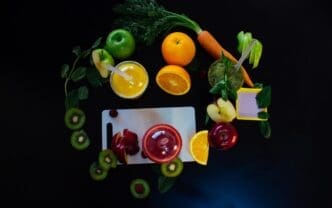A Quick Takeaway
The Story Behind the Trend
How to Make It Work for You
The Community View
Embracing a truly satisfying and nourishing meal doesn’t have to come with a side of guilt, especially when you turn to the versatile world of stuffed vegetables. Who can benefit from this culinary approach? Virtually anyone seeking to incorporate more nutrient-dense, fiber-rich, and delicious meals into their diet, from busy professionals to families. What are we talking about? Whole vegetables, hollowed out and filled with a medley of grains, proteins, herbs, and spices, baked or cooked to perfection. Why are they so good? They offer an ideal balance of macronutrients, abundant micronutrients, and incredible flavor, making them a cornerstone of sustainable, healthy eating that feels indulgent, not restrictive. When can you enjoy them? Stuffed vegetables make for excellent main courses at lunch or dinner, offering a complete meal in one delightful package.
Why Stuffed Vegetables Are a Nutritional Powerhouse
Stuffed vegetables are far more than just a culinary trend; they represent a smart way to maximize your nutritional intake. By using vegetables as the primary vessel, you automatically boost your consumption of essential vitamins, minerals, and antioxidants. This foundational approach supports overall health and well-being.
Nutrient Density
The core of any stuffed vegetable dish is, naturally, the vegetable itself, which is packed with vital nutrients. Bell peppers offer vitamin C, zucchini provides potassium, and eggplant delivers dietary fiber. When combined with wholesome fillings, the nutrient profile of your meal becomes exceptionally rich and diverse.
Calorie Control & Satiety
One of the key benefits of incorporating more vegetables is their high fiber and water content. These elements contribute significantly to satiety, helping you feel full and satisfied on fewer calories. This makes stuffed vegetables an excellent choice for managing weight without feeling deprived or constantly hungry.
Versatility & Customization
The beauty of stuffed vegetables lies in their unparalleled versatility. You can adapt the fillings to suit any dietary preference, available ingredients, or flavor craving. This allows for endless culinary creativity, ensuring your healthy eating journey remains exciting and never monotonous.
Choosing Your Edible Edifice: The Best Vegetables for Stuffing
The success of a great stuffed vegetable dish begins with selecting the right foundation. Different vegetables offer unique textures, flavors, and structural integrity, making them suitable for various fillings and cooking methods. Consider the size and shape to ensure they can hold your desired ingredients.
Bell Peppers
Perhaps the most iconic choice, bell peppers offer a sweet, vibrant flavor and sturdy structure. They come in a rainbow of colors, each offering slightly different nutritional benefits and aesthetic appeal. They hold their shape well during baking, making them perfect for hearty grain and protein fillings.
Zucchini & Summer Squash
These mild-flavored squash varieties are excellent for “boats” due to their elongated shape. Their tender flesh cooks quickly and absorbs flavors beautifully. They are particularly good for lighter, fresh fillings or those featuring herbs and cheese.
Eggplant
Eggplant provides a meaty texture and a slightly bitter note that pairs well with rich, savory fillings. Its spongy flesh readily soaks up flavors, making it a fantastic choice for Mediterranean or Middle Eastern-inspired dishes. Pre-salting can help draw out excess moisture and bitterness.
Tomatoes
Large, firm tomatoes can be hollowed out and stuffed for a juicy, tangy meal. Their natural acidity complements a variety of fillings, especially those featuring rice, herbs, and a touch of cheese. They are ideal for individual portions and a burst of fresh flavor.
Mushrooms (Portobello)
Portobello mushrooms offer a substantial, earthy “cap” that serves as an excellent low-carb alternative to other vegetables. Their umami flavor makes them a superb base for fillings that might otherwise include meat, providing a satisfying, savory experience.
Cabbage & Grape Leaves
For a different approach, consider leafy vegetables like cabbage or grape leaves. These are typically blanched and then rolled around a filling, creating tender, flavorful parcels. They are staples in many traditional cuisines and offer a unique texture and taste profile.
Crafting Your Guilt-Free Fillings: A Balanced Approach
The filling is where the true “guilt-free” magic happens, allowing you to pack in maximum nutrition and flavor. A balanced filling incorporates lean protein, complex carbohydrates, healthy fats, and a burst of aromatic seasonings. Focus on whole, unprocessed ingredients to keep your meal light and beneficial.
Protein Powerhouses
For a satisfying meal, include a lean protein source. Options include ground turkey or chicken, lentils, black beans, chickpeas, quinoa, or crumbled firm tofu. These provide essential amino acids and contribute to satiety, helping to keep hunger at bay.
Complex Carbohydrates
Incorporate whole grains like brown rice, wild rice, farro, or couscous for sustained energy and additional fiber. Sweet potatoes or butternut squash, roasted and mashed, can also serve as a delicious and nutritious carbohydrate base. These slow-digesting carbs prevent blood sugar spikes.
Healthy Fats
A small amount of healthy fat is crucial for nutrient absorption and flavor. Drizzle with extra virgin olive oil, add a few chopped nuts or seeds, or include a modest portion of avocado. These fats contribute to a feeling of fullness and enhance the overall taste experience.
Flavor Boosters
Elevate your dish with a generous use of herbs and spices, garlic, onions, and lemon juice. Fresh dill, parsley, oregano, cumin, smoked paprika, and chili flakes can transform a simple filling into a gourmet experience. Low-sodium vegetable broth can also add depth without excessive salt.
Cheese (Optional & Mindful)
While not essential, a small amount of flavorful cheese can enhance your stuffed vegetables. Feta, goat cheese, or a sprinkle of Parmesan can add a salty tang or creamy texture. Use sparingly to keep the dish light, focusing on flavor rather than bulk.
Tips for Stuffed Vegetable Success
Achieving perfectly cooked, delicious stuffed vegetables is easy with a few simple techniques. Proper preparation ensures even cooking and maximum flavor development. These tips will help you create a dish that looks as good as it tastes.
Pre-Cooking & Scooping
Many vegetables, like bell peppers or eggplant, benefit from a brief pre-bake or blanch before stuffing. This softens them slightly, making them easier to scoop and ensuring they cook through evenly with the filling. Carefully scoop out the flesh, leaving enough wall to maintain structure.
Don’t Overstuff
Resist the urge to pack your vegetables too tightly. Leave a little room at the top for the filling to expand and allow heat to circulate evenly. Overstuffing can lead to raw spots in the center and can cause the vegetable to burst.
Baking vs. Steaming
Baking is the most common method for stuffed vegetables, offering a lovely caramelized exterior and tender interior. Steaming is an option for softer vegetables or when you want a very delicate result. Always ensure the filling reaches a safe internal temperature.
Meal Prep Friendly
Stuffed vegetables are fantastic for meal prepping. You can assemble them in advance and bake them when ready, or bake a large batch and reheat individual portions throughout the week. They often taste even better the next day as the flavors meld.
Savoring the Smart Choice
Embracing stuffed vegetables is more than just a cooking technique; it’s a lifestyle choice that champions wholesome, satisfying, and incredibly flavorful eating. By focusing on fresh produce and thoughtful fillings, you can create dishes that are not only delicious but also deeply nourishing. These versatile creations prove that healthy eating can be an exciting adventure, full of culinary possibilities and entirely free from guilt, allowing you to truly savor every bite.








